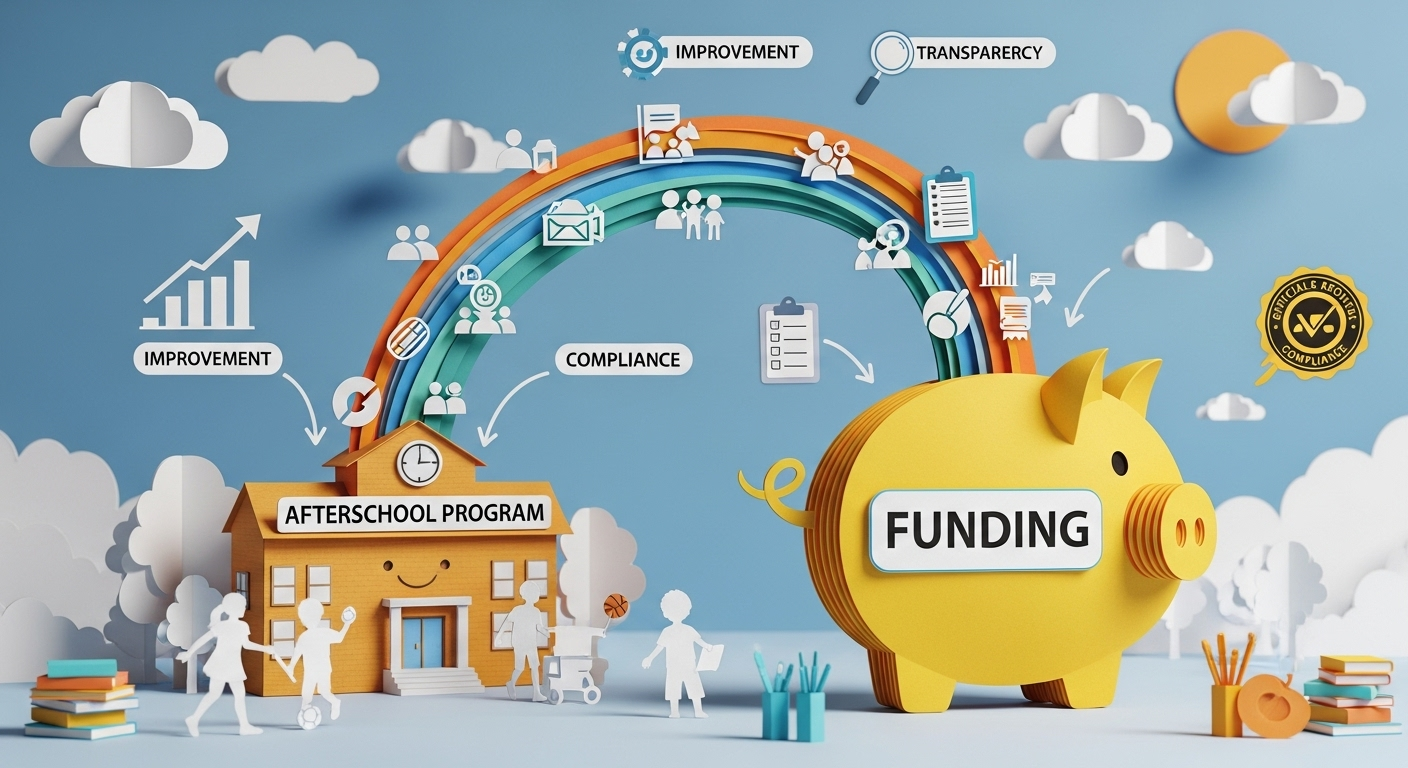
Secure California Grants for Your OST Programs
Secure California Grants for Your OST Programs
Grant funding is essential for the operation and growth of California's Out-of-School Time (OST) programs. These critical financial resources enable programs to function smoothly, hire qualified personnel, obtain necessary materials, and provide a broad range of activities that support the academic, social, emotional, and physical development of students.
Without consistent funding, OST programs would struggle to serve California's youth, especially those in underserved communities. Important funding sources include the Expanded Learning Opportunities Program (ELOP), the After School Education and Safety (ASES) Program, and the federally funded 21st Century Community Learning Centers (21st CCLC).
ELOP significantly funds TK-6 programs, aiming to close opportunity gaps and support working families through allocations to Local Education Agencies (LEAs). ASES grants are competitive, serving grades K-9 and prioritizing literacy, academic enrichment, and safety via school-community partnerships. The 21st CCLC grants provide five-year funding to programs serving TK-12 students, particularly targeting high-poverty, low-performing schools, to enhance academic outcomes and provide broad enrichment.
Familiarizing yourself with these distinct funding streams is crucial for developing impactful and sustainable afterschool programs.
Finding the Right California OST Grant Opportunities
Education administrators must take a proactive approach to navigate California's grant landscape effectively. The California Department of Education (CDE) website, especially its Expanded Learning Division pages, serves as the primary resource for state-specific opportunities like ELOP and ASES. Regularly checking the CDE site for Request for Applications (RFAs), guidance documents, and funding updates is essential.
Federal grant opportunities, such as 21st CCLC, are primarily listed on Grants.gov, though the CDE administers these funds for California.
When selecting appropriate grants, consider each program's specific focus. ELOP primarily supports TK-6 students and requires a nine-hour combined instructional and expanded learning day. ASES is competitive and suitable for elementary and middle schools (K-9) and their community partners, requiring both educational and enrichment components and a local match.
The 21st CCLC targets schools in high-poverty areas, emphasizing robust academic enrichment and family literacy services. Utilizing specialized afterschool management software can streamline data collection, allowing programs to effectively demonstrate alignment with grant priorities.
Writing Grant Applications That Succeed
Crafting an impactful grant proposal involves more than outlining program needs. It requires creating a compelling narrative supported by strong data and clear alignment with funder priorities.
Clearly articulate the educational needs your program addresses, utilizing relevant data and real-life stories to highlight community challenges. Describe your proposed program clearly, ensuring your activities and structures directly meet these needs and align with specific grant requirements, such as the dual focus of ASES or the enrichment emphasis of 21st CCLC.
Demonstrating potential impact is vital. Reference evidence-based practices, share past successes, and outline achievable, measurable outcomes. For competitive grants like ASES and 21st CCLC, explicitly link your program's objectives, activities, and beneficiaries to the funder's stated priorities.
Highlight community partnerships, which funders frequently emphasize. Develop a realistic budget, clearly documenting any required local match. Effective reporting tools that provide detailed data on student participation and demographics will strengthen your application by substantiating your claims and clearly illustrating potential outcomes.
Smart Grant Management and Reporting
Obtaining a grant is just the beginning. Diligent financial management and reporting are equally important. Effective fund administration ensures expenditures align with allowable costs and limits.
The 85/15 rule for ASES and 21st CCLC mandates at least 85% of funds support direct student services. It's crucial to adhere to the principle of "supplement, not supplant," meaning grant funds must enhance existing funding sources.
Accurate attendance reporting is fundamental, particularly for ELOP, as funding is directly linked to Average Daily Attendance (ADA). ASES and 21st CCLC programs typically require semiannual attendance reports. Regular expenditure reporting is also essential, with quarterly submissions for the 21st CCLC and annual submissions for ELOP. Each has strict fund liquidation deadlines.
Employing robust data collection and reporting systems can ease administrative burdens, streamline compliance, and simplify audit preparations.
Ensuring Long-Term Program Financial Health
Sustaining OST programs beyond initial grant cycles demands a strategic approach to financial stability. Relying solely on one grant source creates vulnerabilities. Diversifying funding streams by incorporating federal, state, and local grants, private foundation support, corporate sponsorships, and individual donations builds resilience.
Establish and maintain strong relationships with private funders by understanding and aligning your program's impact with their philanthropic goals. Integrate financial sustainability into your strategic planning by conducting ongoing community needs assessments, fostering strategic partnerships, and setting clear, appealing program objectives.
Demonstrating consistent program effectiveness through comprehensive, reliable data strengthens your case for diverse funding sources, ensuring that California's students continue to benefit from valuable OST programs.






